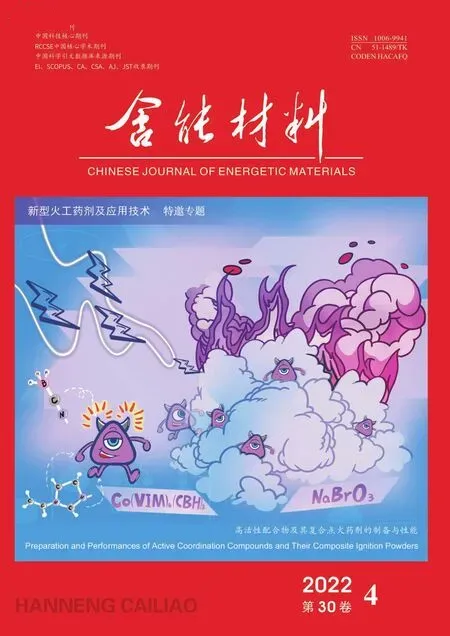Flash Lamps as Ignition and Initiation Sources of the VS⁃2 Pyrotechnic Composition
2022-04-16SergeyGerasimovMikhailIlyushinSergeyPutisSergeyDushenokIrinaShugaleiAndreySudarikov
Sergey I. Gerasimov,Mikhail A. Ilyushin,Sergey M. Putis,Sergey A. Dushenok,Irina V. Shugalei,Andrey M. Sudarikov
(1.Russian Federal Nuclear Center‑All‑Russian Research Institute of Experimental Physics,Sarov,Russia;2.Sarov Institute of Physics and Technology is a Branch of the Scientific Research Nuclear University MEPhI,Sarov,Russia;3.Nizhny Novgorod State Technical University Named after R.E.Alekseev,Nizhny Novgorod,Russia;4.RAS Institute for Studying Problems in Mechanical Engineering,‑is a Branch of the RAS Applied Physics Institute,Nizhny Novgorod,Russia;5."Technologist" Special Design and Technological Bureau,St.Petersburg,Russia;6.Saint‑Petersburg State Institute of Technology(Technical University),St.Petersburg,Russia;7.Russian State Hydro‑meteorological University,St.Petersburg,Russia)
Abstract:In the present work it is found that the pyrotechnic composition VS⁃2 can be initiated with flash lamps IFC⁃500 and EVIS. VS⁃2 pyrotechnic composition contains 90% of mercury(Ⅱ)5⁃hydrazinotetrazolate perchlorate and 10% of optically trans⁃parent copolymer of 2⁃methyl⁃5⁃vinyltetrazole and methacrylic acid(PVMT). We have found that the flash lamps make it possi⁃ble to initiate combustion of VS⁃2 composition with its transition to detonation both in cylindrical charges placed in brass caps of 5 mm diameter and 2 mm high,and film charges with 10 mm×80 mm in size and surface weights of 60 mg·cm-2 and 90 mg·cm-2,showing ignition delay times 10 μs and 3 μs,respectively. We also measured detonation velocities for VS⁃2 composition film charges,which were 4375-4505 m·s-1(of the charge being surface mass 60 mg·cm-2)and 4221-4281 m·s-1(of the charge be⁃ing surface mass 90 mg·cm-2)and their blasting action on the aluminum plate. The depths of the normal shock wave imprints at the charge⁃barrier interface were 0.6-0.7 mm(for surface mass of the film charges 60 mg·cm-2)and 1.2-1.3 mm(for surface mass of the film charges 90 mg·cm-2).
Key words:VS⁃2 pyrotechnic composition;flash lamps;ignition;transition of combustion to detonation;blasting action
1 Introduction
Optical ignition and initiation of energetic mate⁃rials(EM)has important practical advantages over electrical detonation methods:(1)The optical signal is immune to electromagnetic interference,static electricity charges,stray currents and changing pres⁃sure and temperature conditions,(2)The impulse delivery does not depend on materials that can dete⁃riorate over time.
In the 50 s of the twentieth century,investiga⁃tions of the blast initiation of energetic inorganic salts of heavy metals by intense incoherent radiation of photoflash lamps started. A mixed salt of silver acetylenide⁃nitrate(Ag2C2⁃AgNO3,1)and lead azide(Pb(N3)2)were among the studied primary EMs that showed the sensitivity to incoherent radiation of a xenon or argon pulsed sources were Ref.[1-3]. In the reference[4],a film of salt 1,was applied in the form of spray on the substrate surface,and explodes when exposed to intense light of a photographic flash lamp or a xenon flash lamp. The explosion re⁃sults if thickness of the salt 1 layer is more than 0.004 inches(~0.102 mm). The authors of publica⁃tion[5]carried out a few series of experiments on the initiation of salt 1 films with an area of ~10 in2by pulsed radiation from a 10⁃inch xenon lamp,which creates peak target illumination of 7.2×106lumen·in-2.It was shown that the initiation of salt 1 layer occurs simultaneously over the entire target surface,while concentration of "hot spots" on the film surface ex⁃ceeded 110 dpi. The target illumination mode given in Ref.[5]ensured initiation of the entire sample ar⁃ea within 2-4 μs,and the estimated explosion ve⁃locity of the salt film 1⁃600 m·s-1. This laboratory method for simultaneous blasting of mixed salt 1 films with incoherent radiation from xenon flash lamp was then successfully scaled up and imple⁃mented at Sandia National Laboratories(USA)as the method of testing missile warheads in order to simulate pulsed effect of X⁃ray radiation from nucle⁃ar explosion on rocket warheads[6]. Therefore,opti⁃cal initiation with incoherent radiation sources al⁃lows simultaneous initiation of EM over the large ar⁃ea using inexpensive pulsed radiation sources that do not need expensive maintenance. So,it was shown that optical EM initiation by incoherent radia⁃tion of flash lamps has an advantage over laser initia⁃tion that is currently widely used to initiate EM[7-10].
In the 21stcentury,the research works exploring possibility of initiating secondary EM over the large area with pulsed incoherent radiation of flash lamps were released to the public. In Ref[11]the research⁃ers have shown that single⁃wall nanotubes(SWNT)are effective sensitizers reducing the ignition thresh⁃old of pentaerythritol tetranitrate (PETN). The PETN⁃SWNT mixtures were ignited with light pulses with irradiating charges having power of 17 W·cm-2and duration of 1-2 ms. However,the obtained PETN⁃SWNT compositions had a reduced oxygen balance in comparison with the initial PETN,whilst there was a possibility of secondary reaction of SWNT with air[12-13]. Consequently,it was necessary to find secondary EMs that were able to ignite under the radiation of flash lamps and would not have too high sensitivity to mechanical influences. Such com⁃pounds have been found among high⁃nitrogen het⁃erocycles. These are:3,6⁃bis(1H⁃1,2,3,4⁃tetra⁃zole⁃5⁃ylamino)⁃s⁃tetrazine (BTATz,2)[14-16]and mixed N⁃oxides of 3,3'⁃azo⁃bis(6⁃amino⁃1,2,4,5⁃tet⁃razine)(DAATO 3.5,3)[16-18],as shown in Scheme 1.

Scheme 1 Compounds 2 and 3

Scheme 2 Сompound 4 and copolymer PVMT
Studies have shown that the threshold of ignition energy of compound 2 was ~3000 mJ·cm-2(peak ir⁃radianceIpeak=3730 W·cm-2),while the faster⁃burning compound 3 had the threshold of ignition energy~1800 mJ·cm-2(peak irradianceIpeak=1530 W·cm-2).Compounds 2 and 3 can be used in gas generators[12-13].
2 Experimental part
2.1 Materials and equipments
Mercury(Ⅱ)perchlorate complex with 1⁃H⁃5⁃hy⁃drazinotetrazole as a ligand(1⁃H⁃5⁃hydrazinotetra⁃zole mercury(Ⅱ)perchlorate,4)was synthesized according to the method as described in the pat⁃ent[19]. In the pyrotechnic composition VS⁃2,the mixture of an optically transparent polymer(a copo⁃lymer of 2⁃methyl⁃5⁃vinyltetrazole (~98%) and methacrylic acid (~2%)(PVMT) in the total amount of ~10% by weight of metal complex 4)was used as an inert matrix(binder)that improves handling safety.
Radiation of both impulse photo⁃illuminating compact flash lamps of the IFC⁃500 brand(Fig.1)and electric explosive light sources ⁃ flash lamps of the EVIS brand(Fig.2)as a source of a powerful light incoherent pulse was used in the work. IFC⁃500 lamps belong to classical pulsed xenon flash lamps.

Fig.1 Impulse photo⁃illuminating compact xenon flash lamp IFC⁃500

Fig.2 Scheme of an electric explosive light source⁃flash lamp EVIS
The discharge of the storage capacitor caused an instantaneous glow of xenon gas of very high bright⁃ness in the IFC⁃500 flash lamp. The spectral composi⁃tion of the emitted light was close to that of the sun.EVIS flash lamps are treated as explosive incoherent light sources,while these lamps are used a powerful short⁃term illumination of the object occurs behind the expanding front of the shock wave in the air.
When a high voltage was applied to the elec⁃trodes of the spark gap 4 of the EVIS flash lamp,an electrical breakdown of the air occurred and a streamer was formed between the electrodes of the spark gap at a distance of ~90 mm. When streamer expanded at a speed of 2-4 km·s-1,a strong shock wave shining like an absolutely black body arose.Before the experiment,the EVIS flash lamp was cov⁃ered with a transparent adhesive tape to prevent the formation of glass dust during its explosion and to fix the fragments of the emitting and supporting glasses.The characteristics of the flash lamps used in this study are described in detail in Ref.[20]. The flash lamps were destroyed during the tests under the ex⁃perimental conditions.
Fig.3 shows the dependence of illumination on time for these types of incoherent radiation sourc⁃es[20]. According to the diagram in Fig.3,the EVIS flash lamp has shorter and more powerful optical ra⁃diation interference with substances chemically ac⁃tive media.

Fig.3 Illumination intensivity over time produced by flash lamps(accumulator energy E=75 J)[20]
2.2 Sample preparation
The mixing of the components of the pyrotech⁃nic composition VS⁃2 in chloroform was carried out according to the method presented in the patent[21].
Brass caps 5 mm×2 mm in size were filled with the resulting suspension of the pyrotechnic composi⁃tion VS⁃2. After evaporation of the solvent,the charges of the VS⁃2 composition had the form shown in Fig.4. The charge mass of the composition VS⁃2 in the cap was ~45 mg. The properties of the photosensitive mercury metal complex 4,as well as the photosensitive pyrotechnic composition VS⁃2,are described in detail in Ref.[22].
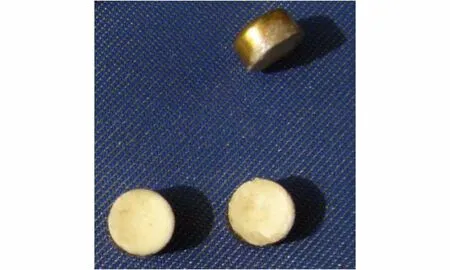
Fig.4 External view of assemblies of VS⁃2 pyrotechnic compo⁃sition charges
The films of VS⁃2 pyrotechnic composition were obtained by applying a suspension of VS⁃2 in chloro⁃form on polished aluminum sheets 0.15 mm thick followed by removing the solvent(Fig.5).

Fig.5 A sample of the film charge of the VS⁃2 pyrotechnic composition
We prepared four experimental film charges of VS⁃2 pyrotechnic composition of 10 mm×80 mm size. Samples 1 and 2 of VS⁃2 composition were ~0.55 mm thick(with surface mass ~60 mg·cm-2),and samples 3 and 4 of VS⁃2 composition were ~0.82 mm thick(with surface mass ~90 mg·cm-2)[23].The observed density of film samples of VS⁃2 compo⁃sition was ~1.2 g·cm-3.
2.3 Experimental
The scheme of the experimental setup for deter⁃mining the threshold for the initiation of the VS⁃2 composition by the irradiation of IFC⁃500 flash lamp is shown in Fig.6.

Fig.6 Scheme of the experimental setup for estimation of the radiation of the IFC⁃500 flash lamp action on the pyrotechnic composition VS⁃2
The fact of the initiation of the explosion of the charge of the pyrotechnic composition VS⁃2 after ir⁃radiation with flash lamp 2 was determined by the sound effect,the presence of a light flash of the ex⁃plosion products and by the result of their impact on witness plate 3.
Scheme of an experimental setup for studying the initiation of a charge of a secondary EM(PETN)by a charge of the pyrotechnic composition VS⁃2(Fig.7).

Fig.7 Scheme of initiation of PETN charge in the cylindrical channel with rigid walls
Charge initiation took place in a cylindrical channel of a massive steel clip. One of the channel ends was closed with a half⁃ring(a thin duralumin witness plate). Then,the charge of PETN and brass cap with the charge of composition VS⁃2 were placed in the channel. The bottom of the cap was in contact with the PETN charge. Single irradiation of the free surface of VS⁃2 composition was performed with an IFC⁃500 gas⁃discharge flash lamp connected to the discharge 150 J circuit of the electric energy storage device. Distance from the emitter to VS⁃2 composition charge was equal to 10 mm.
Scheme of the experimental setup for studying the initiation of detonation of a film charges of the composition VS⁃2(Fig.8).
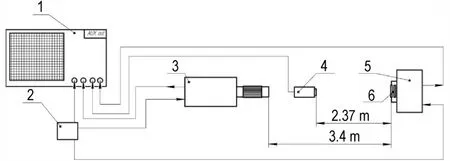
Fig.8 Scheme of connection and placement of the test ob⁃ject,radiation source and measuring equipment
Test object 6(film charge of pyrotechnic compo⁃sition VS⁃2)was installed at a distance of ~14 mm from the gas⁃discharge emitter EVIS. The streamer of the gas⁃discharge emitter was located at a distance of 10 mm from the edge of the test object.The surface of the flash lamp facing the electron⁃optical camera was covered with black matte paper. A digital oscillo⁃scope 1,an EVIS⁃3 pulsed light source 5,and an electron⁃optical camera 3 were launched from the matching block 2. The oscilloscope 1 recorded the signals coming from the output of the photometer 4,the“exposure”from the“Nanogate 22/2”camera 3 and the“chronography”of the flash lamp EVIS 5.
3 Results and Discussion
3.1 Initiation of charges of VS⁃2 pyrotechnic composition under the action of incoherent light radiation
When studying the interaction of powerful light radiation with matter,the most important problem is the study of the initiation of chemical reactions in ac⁃tive media. Chemical processes taking place under irradiation with light sources have their unique prop⁃erties that are,firstly,nonequilibrium due to the un⁃steady course of reactions,and,secondly,mutual influence of the chemical state of the medium and both energy and mass transfer in the powerful light wave area. Previously,it was shown that the pyro⁃technic composition VS⁃2 has low thresholds of initi⁃ation under the radiation of pulsed solid⁃state neo⁃dymium lasers and laser diodes[22,24-25]. How⁃ever,the sensitivity of the VS⁃2 composition to inco⁃herent radiation of flash lamps has not been studied in detail.
At the primary stage of the work,we have stud⁃ied the susceptibility of VS⁃2 composition to the in⁃tense light wave emitted by IFC⁃500 flash lamp. The energy discharge of the storage devices was fed to an IFC⁃500 flash lamp. As a result,single light puls⁃es with a duration ofτ0.5=4 μs(at storage energy dis⁃charge 75 J)andτ0.5=3 μs(at storage energy dis⁃charge 150 J)were generated at the maximum color temperatures of the emitter equal 9000 K and 12000 K,respectively. It is known that the intensity of light effecting a target is inversely proportional to the square of the distance from its source. Therefore,as the distance from the light source doubles,the il⁃lumination of any object decreases fourfold. Conse⁃quently,the maximum distance of VS⁃2 charges from IFC⁃500 flash lamp,when the initiation of pyrotech⁃nic composition is still possible,serves a measure of its susceptibility to the powerful light wave action.
Scheme of the experimental setup for estimation of the radiation of the IFC⁃500 flash lamp action on the pyrotechnic composition VS⁃2 is shown in Fig.6.According to its experimental results,the initiation threshold of VS⁃2 composition was influenced by the color temperature of the source determined by the discharge energy of the storage devices(Table 1).

Table 1 Results of initiation of the VS⁃2 composition with the IFC⁃500 flash lamp
The experimental results presented in Table 1 show that at the color temperature of the emitter 9000 K the initiation threshold of the VS⁃2 composi⁃tion charge was reached only when the light source was in direct contact with the charge(this is the initi⁃ation threshold of the VS⁃2 composition),while at the color temperature of the emitter 12000 K the VS⁃2 composition charge was initiated by the IFC⁃500 flash lamp at a distance up to 25 mm.
Consequently,the IFC⁃500 emitter initiates an explosion of the charge of the VS⁃2 composition when the electric energy storage device is dis⁃charged at least 75 J.
3.2 Detonation initiation of the charge of PETN by the explosion of the VS⁃2 pyrotechnic composition
At the second step of our work,we have stud⁃ied the applicability of VS⁃2 pyrotechnic composi⁃tion for the initiation of secondary EM. The study was carried out on the example of PETN charge initi⁃ation by the charge of VS⁃2 composition. Scheme of an experimental setup for studying the initiation of a charge of a secondary EM by a charge of the pyro⁃technic composition VS⁃2 is shown in Fig.7. Charge initiation of PETN took place in a cylindrical chan⁃nel of a massive steel clip. The result of irradiation with an incoherent light source was the excitation of detonation in the PETN charge(Fig.9).
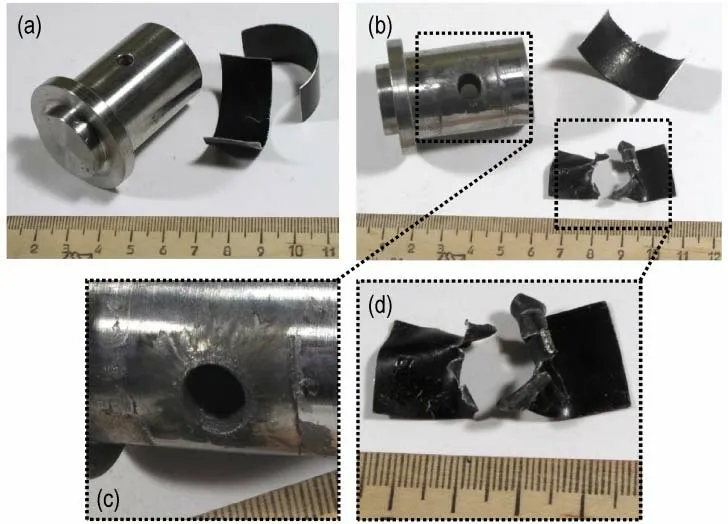
Fig.9 View of the holder and the witness plate before(a)and after the experiment(b,c,d)
From Fig.9c and 9d it follows that the transfor⁃mation of PETN charge was carried out in the nor⁃mal detonation mode,as evidenced by the swelling of the hole in the matrix(Fig.9c)and the destruction of the witness plate by the blasting action of the sec⁃ondary energetic material(Fig.9d).
Consequently,the brass cap,equipped with the VS⁃2 pyrotechnic composition,after irradiation with the light pulse of the IFC⁃500 flash lamp,ex⁃ploded and caused the detonation of the charge of the secondary EM PETN as shown in Fig9b,9c,9d.The results obtained are in good agreement with the data given in Ref[25].
3.3 Initiation of elongated film charges of VS⁃2 pyrotechnic composition by incoherent pulsed radiation
The next stage of our work was devoted obtain⁃ing elongated film charges of VS⁃2 pyrotechnic com⁃position and to study their explosive properties. Be⁃fore creating film charges based on VS⁃2 pyrotechnic composition,it was necessary to estimate the mini⁃mum film thickness of VS⁃2 composition that en⁃sured the propagation of stable detonation in the charge. We assumed that thickness of VS⁃2 composi⁃tion film,that makes it possible to achieve the transi⁃tion of combustion into detonation when irradiated with a flash lamp,can be approximately equal to the thickness of the film that ensures its explosion when VS⁃2 composition is ignited by a heat source,for example,a beam of fire from a sample of black powder. The experimental assembly consisted of VS⁃2 film fixed on the pressed charge plate surface of hexahydro⁃1,3,5⁃trinitro⁃1,3,5⁃triazine(RDX).A sample of black powder was placed on top of film VS⁃2 composition,which combustion excited an ex⁃plosion in the film charge. A series of experiments was carried out with VS⁃2 composition films with various thicknesses. Analysis of the steel plate sur⁃face state shows that the RDX sample detonation took place and the detonation products effected the plate surface. The detonation of RDX charge was ini⁃tiated by the film of VS⁃2 pyrotechnic composition being about ≥0.3 mm thick. The estimated pressure values of the explosion products in the VS⁃2 film composition shock wave based on the calculation[26]were about ~1.4 GPa,and the film explosion energy~46 J·cm-2. The obtained results indicate that a sta⁃ble explosive process took place in the VS⁃2 compo⁃sition film ~0.3 mm thick upon excitation by heat sources.
The detonation properties of VS⁃2 composition film samples were studied during their initiation by pulsed radiation from an EVIS flash lamp(τ0.5=1.5 μs). During the experiments,samples 1-4 of the VS⁃2 pyrotechnic composition were fixed on an aluminum witness plate 4 mm thick to record the action of the explosion products on the obstacle.The connection and placement of the VS⁃2 pyrotech⁃nic composition film charge,the radiation source and measuring equipment during the initiation of detonation by pulsed incoherent radiation were placed in accordance with the scheme shown in Fig.8.
While testing samples 1-4,we have found that the ignition delay time of a film charge sample of VS⁃2 pyrotechnic composition under irradiation with an EVIS flash lamp did not exceed 3 μs. It should be noted that the ignition delay of VS⁃2 composition charges in brass caps(Fig. 4) was studied earlier when the IFC⁃500 flash lamp was initiated by pulsed radiation,and the ignition delay time of the samples was ~10 μs[27]. The fact that the ignition delay of film samples of VS⁃2 composition turned out to be significantly less than that of VS⁃2 composition sam⁃ples in brass caps is probably attributed to the use of EVIS flash lamp that creates higher illumination of the target(Fig.3).
We have registered and recorded the propaga⁃tion of a detonation wave in samples 1-4.
Fig.10 illustrates two photos(from 15 photos,recorded time up 0 to 20 μs)of explosive process in sample 1 shot by“Nanogate 22”camera. The refer⁃ence time was the moment when the signal was giv⁃en to start the initiating pulse of the EVIS flash lamp.
As it can be seen from Fig.10,the front of the detonation wave has a curve shape that changes over time. On the basis of experimental data ob⁃tained,the dynamics of detonation wave front move⁃ment were calculated. The dynamics was evaluated based on two points:coordinates of the farthest and closest parts of the detonation wave front relative to the right edge of the VS⁃2 composition film charge(Fig.11-14).

Fig.10 Photos of the explosive process(a-b)in sample 1 shot by“Nanogate 22”camera

Fig.11 Change in the position of the front of the detonation wave in film charge No.1 with time
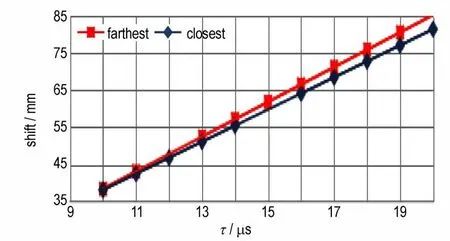
Fig.12 Change in the position of the front of the detonation wave in film charge No.2 with time

Fig.13 Change in the position of the front of the detonation wave in film charge No.3 with time

Fig.14 Change in the position of the front of the detonation wave in film charge No.4 with time
It should be noted that the data obtained for ex⁃posure times up to 9-10 µs describe nonstationary processes in film charges 1-4 and were not included in Figs.11-14. It can be seen from the graphs that the data obtained during the experiments(Fig.11-14)are well extrapolated to a straight line. The stan⁃dard deviation lies in the range of 0.96-0.98,which indicates a high convergence of the obtained results.
The estimated average velocity of sliding deto⁃nation wave front movement in film charges was(4375±127)m·s-1,(4505±43)m·s-1for samples 1 and 2 and(4221±83)m·s-1and(4281±67)m·s-1for samples 3 and 4. According to these results,it may be assumed that the speed of explosion of thin⁃ner films(samples 1 and 2)is additionally influ⁃enced by the speed of sound in the aluminum sub⁃strate(~5000 m·s-1).
At the final stage of our research,we have mea⁃sured the blasting action of normal shock wave of VS⁃2 film charges on the witness plate. The results of the experiment are presented in Table 2.
From Table 2 we can see that an increase in the surface mass of the film charge by 50% (from 60 mg·cm-2to 90 mg·cm-2)leads to an increase in the imprint depth of a normal shock wave at the charge⁃barrier interface almost twofold(from 0.6-0.7 mm to 1.2-1.3 mm). Therefore,the results ob⁃tained in this work can serve as a basis for calculat⁃ing the blasting action of VS⁃2 pyrotechnic composi⁃tion film charges on an obstacle,depending on their surface mass.

Table 2 Surface masses of VS⁃2 composition film charges and depths of imprints of normal shock waves on aluminum witness plates
4 Conclusions
Thus,the experiments carried out in this work have shown:
(1)According to the experimental results,the limiting distance from the radiation source to the VS⁃2 composition,at which its explosion was initiat⁃ed,was determined by the color temperature of the source,which depended on the energy of the accu⁃mulator discharge.
(2)The explosion of the charge of the pyrotech⁃nic composition VS⁃2,irradiated with incoherent ra⁃diation of the IFC⁃500 flash lamp,caused the deto⁃nation of charge the secondary EM PETN.
(3)An EVIS flash lamp initiates VS⁃2 composition film charges with a delay time of 3 μs,while,de⁃pending on the surface mass,sliding detonation ve⁃locity of the pyrotechnic charge was 4375-4505 m·s-1(for surface mass 60 mg·cm-2)and 4221-4281 m·s-1(for surface mass of 90 mg·cm-2).
(4)During normal detonation VS⁃2 composition film charges exhibit blasting effect,which is directly proportional to the surface mass.
The article has only scientific value and its re⁃sults are not applicable in practice.
Acknowledgment:This work was supported by the RFBR grant 17⁃03⁃00566.
Conflict of interest:The authors declare that there is no conflict of interest requiring disclosure in this article.
